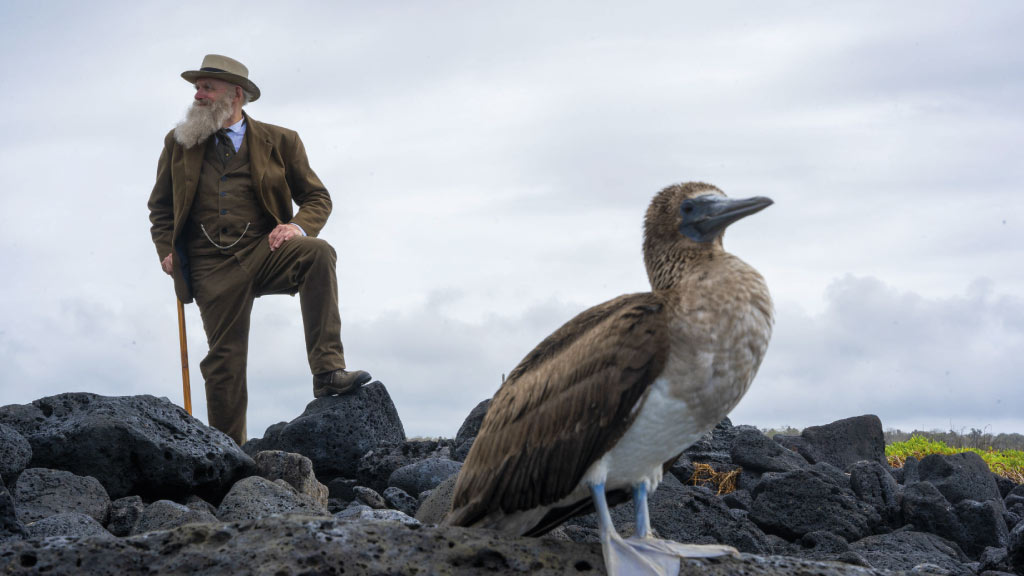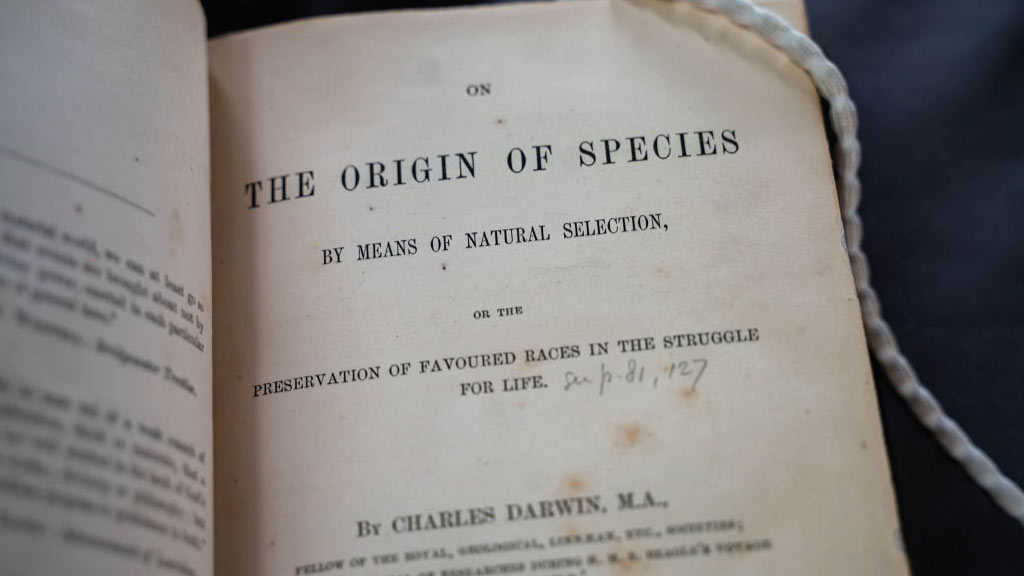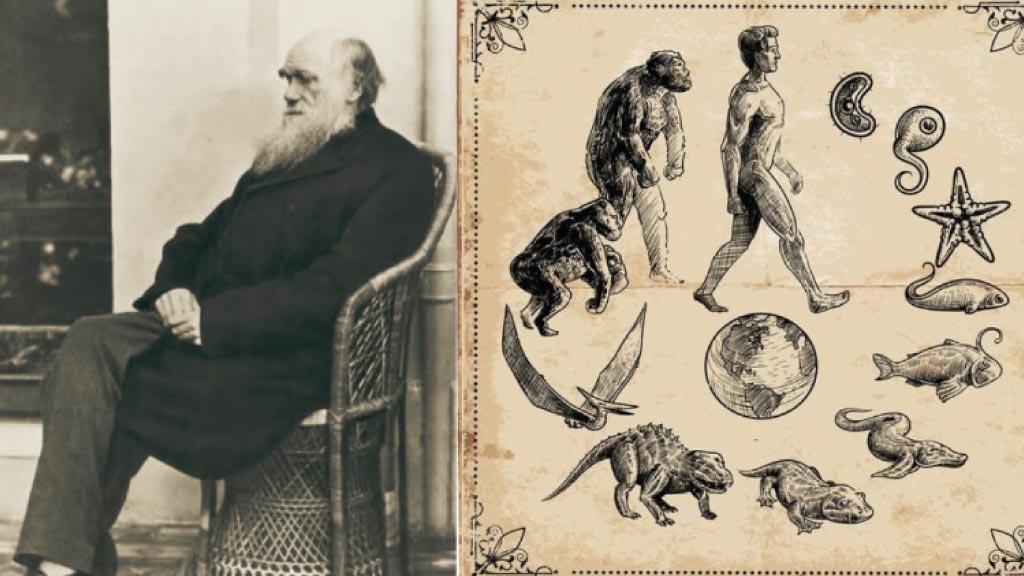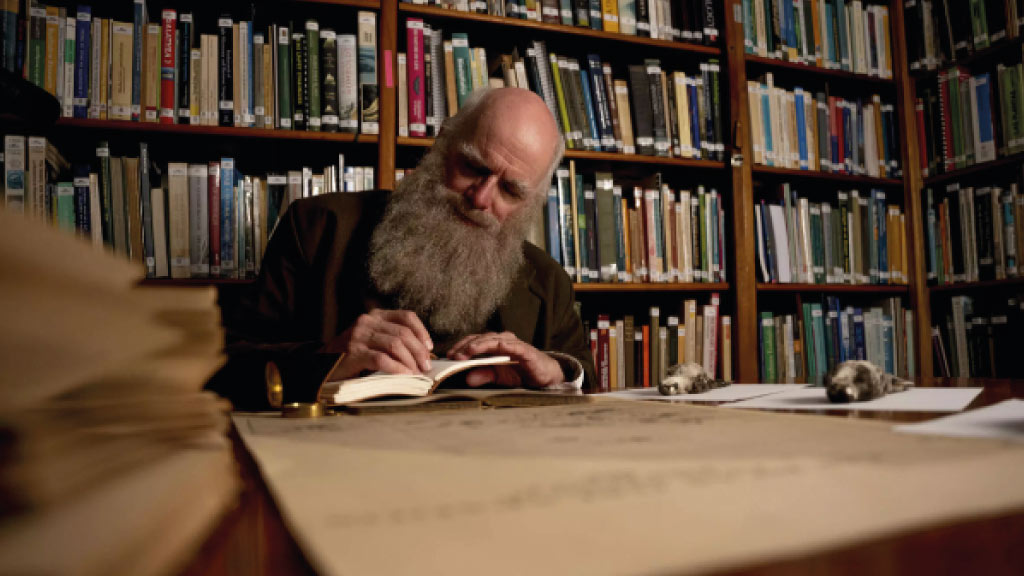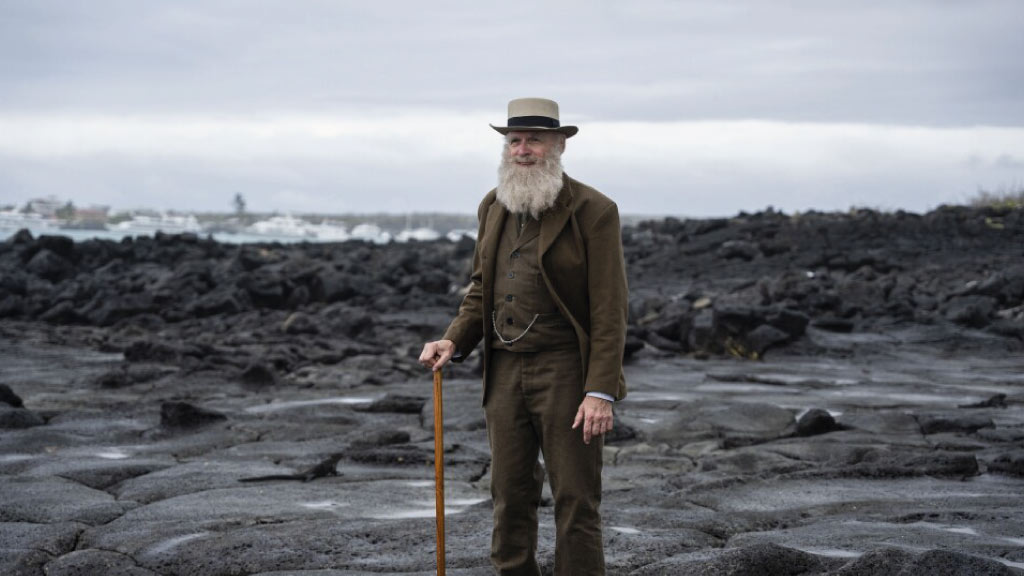Charles Darwin and the Galapagos Islands
The history of the Galapagos Islands and Charles Darwin will forever be intertwined. It was Darwin’s visit to the Galapagos in 1835 that inspired his famous Theory of Evolution and Natural Selection, changing the world of science forever. In return, Galapagos received world recognition as a unique travel destination.
In Darwin’s own words:
“The natural history of this archipelago is very remarkable: it seems to be a little world within itself.”
Today, visitors to the Galapagos can experience this remarkable place, and follow in Darwin’s footsteps.
The islands are a living laboratory of evolution, where one can witness first-hand the biological differences between related species on nearby islands. You can also cross paths with incredible endemic creatures found nowhere else on the planet.
Incredibly, the animals at Galapagos still show no fear of humans, just as Darwin himself described in his trip notes all those years ago. This is what makes the Galapagos Islands such a unique and compelling wildlife travel destination.
Keep reading to learn more about Charles Darwin and Galapagos. We’ll tell the whole story of his weeks at the archipelago. Which islands did Darwin visit? Which animals did he encounter? What was it that inspired his eureka moment? Also, what is Darwin’s legacy at the Galapagos Islands today?
SECURE YOUR GALAPAGOS TRAVEL
Get a FREE personalised quote todayWho Was Charles Darwin?
Charles Robert Darwin was born in Shrewsbury, England on 12th February 1809.
He was fortunate to be born into a prominent medical family. His father was a doctor, while his grandfather, Dr. Erasmus Darwin, had been a famous botanist.
Although an unremarkably average student at university, Darwin’s life changed dramatically after persuading Captain Robert Fitzroy to let him join a voyage of discovery aboard the HMS Beagle.
About Charles Darwin’s Visit to the Galapagos Islands
It was during the 5-year voyage of the HMS Beagle that Charles Darwin set foot on the Galapagos Islands. Let’s dig a little deeper into what he did there, and how it was to change the world of science forever.
When Did Charles Darwin go to the Galapagos Islands?
The HMS Beagle set sail from Plymouth, England on 27th December 1831, prepared for 5 long years at sea.
The main purpose of the voyage was to map the southern coastline of the Americas while collecting scientific data and botanical specimens along the route.
The Beagle reached the Galapagos Islands on 15th September 1835, during her return journey.
Here is a map of the complete route sailed by the HMS Beagle, including her stop at the Galapagos Islands.
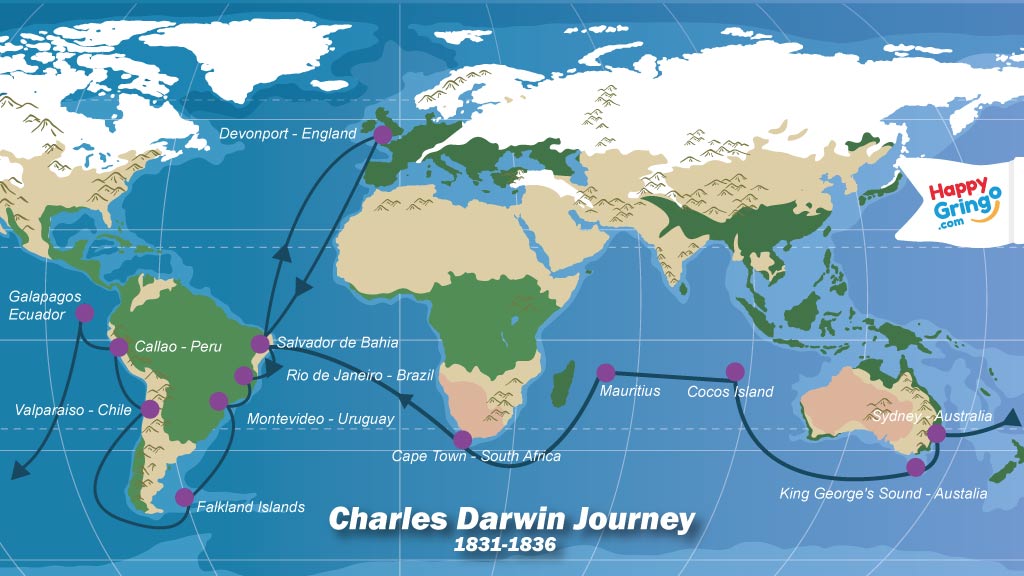
What many people today don’t realize is that Charles Darwin and the Beagle spent just 5 weeks at the Galapagos Islands. In truth, it was a fairly insignificant part of the overall voyage at that time.
What Did Charles Darwin do on the Galapagos Islands?
The role of Charles Darwin on the mission of the HMS Beagle was as a naturalist, to collect scientific information and botanical species.
Darwin filled notebooks with sketches and observations of the plants, animals, and geology that he encountered. He also sent many samples of fossils, rocks, and biological specimens back to England.
It’s fair to say that Darwin was inspired by what he found at the Galapagos. Although the 5 weeks spent at the Galapagos represented just 2% of his overall voyage, Darwin dedicated roughly one-quarter of his notes to his time spent here.
Although the specimens he took from the Galapagos were unorganized and, in some cases, mislabeled, they were to be the seeds that planted his later ideas.
Why Was the Visit of Charles Darwin to Galapagos so Important?
Darwin’s visit to the Galapagos Islands may have been an insignificant part of the voyage at the time, but the scientific leap forward that came from it is still extremely important today.
So, what did Darwin discover at the Galapagos?
It began as a general observation floating around his brain. He’d noticed that each island he visited had similar creatures but with distinct adaptations and differences. For example, the beaks of Galapagos Mockingbirds were shaped differently on each island. These differences were often subtle, but surely could not be an accident of nature.
It seemed to Darwin that the same original species had adapted to the unique habitat and environment found on each island, so much so that different sub-species had eventually developed over time.
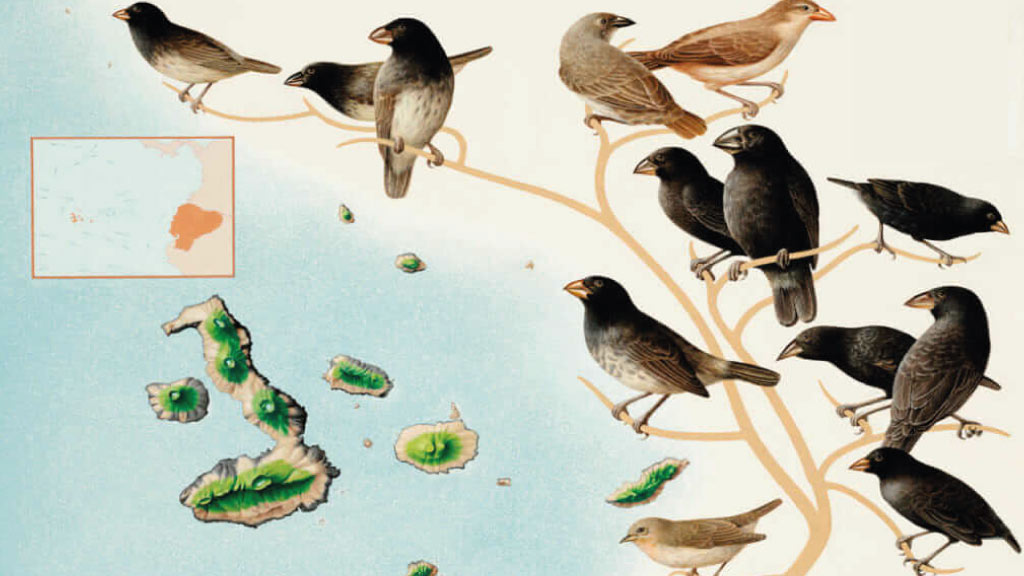
Charles Darwin and the Origin of Species
On returning to England, Darwin developed his theory over the next 2 decades. In 1859, he finally published his findings for the world to see in his now-famous book “On the Origin of Species”.
At the time his book was considered extremely controversial by the church. Darwin was suggesting that the biological origins of life were not down to God alone. Even Darwin himself, as a strict Christian, had his misgivings.
Let’s take a closer look at the main scientific theories he shared with the world.
Darwin’s Theory of Evolution
Darwin further developed his original observations about the differences between species across the Galapagos islands. What if species were evolving according to their local environment?
Darwin successfully demonstrated that a single species in the Galapagos could evolve different physical traits and behaviors based on the food sources that they found on each island.
This theory is also known as “natural selection” or “survival of the fittest”. That is, a beneficial physical trait, such as a long beak, may improve the chances of species survival in a certain, isolated habitat. That trait therefore stands a higher chance of surviving and being passed down genetically. With each new generation, therefore, the trait becomes further exaggerated.
At the same time, less beneficial physical traits that do not enhance the chances of survival in that environment are genetically lost over time.
Hence, Darwin proposed the conclusion that species are capable of evolving over time in the quest for survival. Additionally, species in distinct environments can evolve in different ways.
Had all life on earth evolved in such a way? What implications did this have for the origin of humans and our evolution?
Darwin’s Theory of Endemism
Another idea central to Darwin’s work was that of endemism. That is, that a species may be found in just one specific place on earth, and nowhere else.
The Galapagos Islands were the perfect example for Charles Darwin to demonstrate this.
Galapagos is rather unique in that the archipelago is in a very isolated location and formed from underwater volcanoes in the middle of the Pacific Ocean. So, any life found on the islands had to have migrated from elsewhere, presumably the South American continent. Yet, so many of the species that he encountered here exist nowhere else on earth.
Even more curiously, Darwin had visited a variety of small islands in the Galapagos, all rather close together, and yet he had found different endemic species even between these islands.
He therefore proposed that the creatures that live at the Galapagos Islands had originated from South America, and yet evolved in different ways in each island's environment to form new, endemic species and sub-species.
Which Animals Did Charles Darwin Study at the Galapagos Islands?
Let’s now take a look at some specific examples of the creatures that Charles Darwin studied on the Galapagos Islands.
Darwin and the Galapagos Mockingbird
Darwin’s eureka moment actually came from the Galapagos Mockingbird.
Today, visitors may spot the difference in size and shape of mockingbird beaks between each island. In particular, the Española Island Mockingbird has a longer and more pronounced curve of beak than the other Galapagos Mockingbird species. This helps them to delicately tap a small hole into seabird eggs, an important food source on that particular island.

Darwin and Galapagos Finches
Another important species that Darwin collected on the islands was the humble Finch.
Galapagos finches (also known as Darwin’s Finch) have different beak shapes and sizes depending on their principal food source on each island. While the cactus finch needs a long, sharp beak to forage for food on the Opuntia Cactus, the ground finch has a more rounded beak suited to eating seeds and cracking open nuts.
This diagram shows more clearly the differences between each finch species found in the Galapagos today. See how many you can distinguish when you visit!
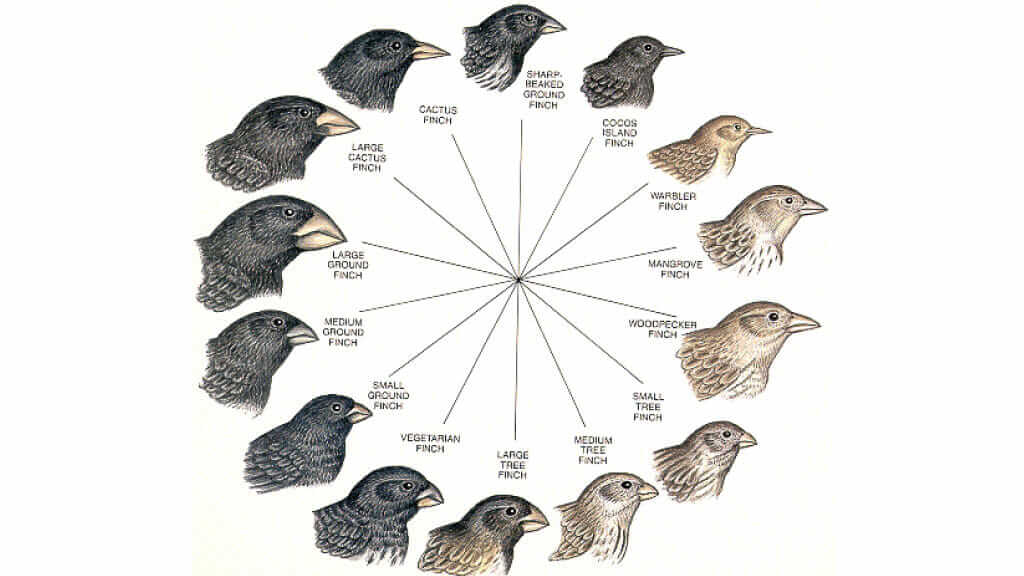
GET FREE ADVICE
From a Galapagos destination expert todayCharles Darwin and the Galapagos Tortoise
Another of the curious Galapagos animals that Charles Darwin encountered is the Giant Galapagos Tortoise.
The Galapagos Tortoise is a fabulous example of Island Gigantism. When animals live in isolated locations (for example, remote islands) with ample food sources and no predators, they are able to grow to larger sizes than they would in their regular, more constrained environment.
The tortoises are also a wonderful example of evolution specific to different island habitats.
Check out the diagram below. You’ll see that some tortoises have longer necks and shells that curve up at the front like a saddle. These species are found on islands without an abundance of ground-level plants or shrubs. They survive by eating higher-hanging food, such as the fruit and pads of Cactus plants. Their evolved genetic traits help them to reach up higher to eat.
Meanwhile, tortoises on different islands, have more typical dome-shaped shells. They lucked out landing on islands with abundant ground-level food sources, so had no need for longer extending necks.
Remember, all of these tortoise species originated from the same mainland species. Even though each Galapagos Island is not far from the next, they encountered very different natural environments on each one. Hence, it is the differences in evolutionary process that give us the 12 different sub-species alive on the islands today.
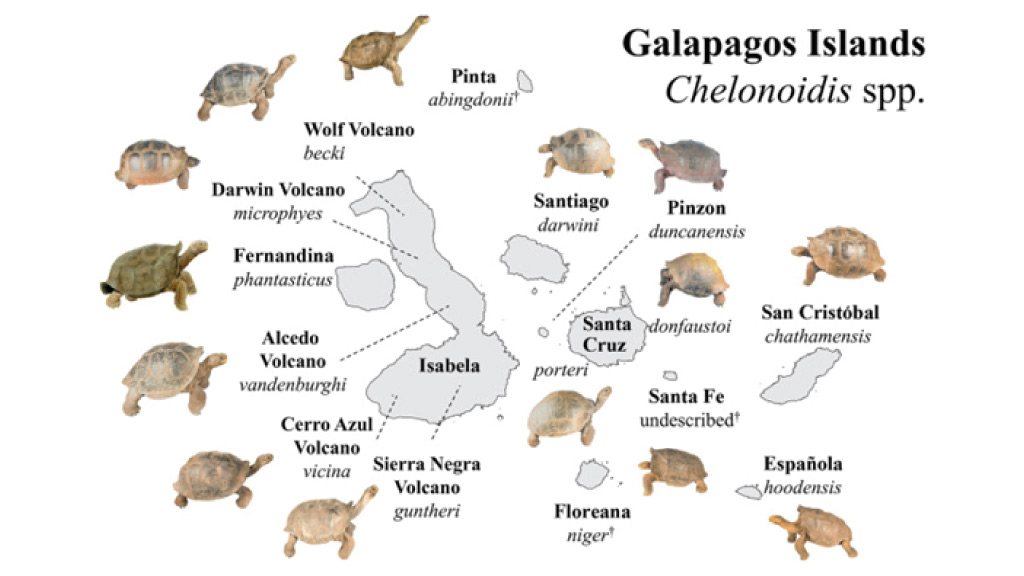
Other Examples of Evolution at the Galapagos Islands
Although not specifically mentioned by Darwin in his literature, there are many other examples of species’ evolution that can easily be observed by visitors.
Consider the case of the Marine Iguana. Originally descended from continental land iguanas, they had to learn to swim in order to survive on a diet of seaweed. Physically, evolution gave them a special blood pigment that holds more oxygen, essential for long dives. Their teeth became sharper to cut away algae and seaweed from the rocks. Long claws developed to grip slippery rocks underwater. The Marine iguana's tail became streamlined to steer expertly when swimming. A flatter snout gave easier access to food on the rocks.
Their unique nostril glands allow them to desalinate after swimming (spitting salt from their noses). Their skin also turned darker for better sun heat absorption to keep them warm in the cold Galapagos waters. All in all, it was quite a remarkable transformation from land iguana to marine iguana species!

The Flightless Cormorant is another great example. Found only on Isabela and Fernandina Islands to the west of the archipelago, this unique cormorant has forgotten how to fly.
In their new habitat, they found few land predators to threaten bird species like cormorants. At the same time, their best food sources were found deep in the ocean.
So, the Galapagos Cormorant went through two important evolutionary adaptations. First, they developed powerful hind legs for maneuvering underwater. Next, their wings shrunk and declined, leaving tiny wing stubs in place of their previously powerful limbs.
Thus, the Galapagos Cormorant became a Flightless Cormorant. A highly skilled swimmer and diver, but now completely unable to fly.
Last but not least, meet the Galapagos Penguin. This adaptation is perhaps the craziest of all, as a species from Antarctic waters evolved to live at the Equator!
Their most obvious adaptation is in physical size. They lost excess body fat that was no longer required to keep them warm, leaving them streamlined for warm weather conditions.
But even that is not enough to keep a Galapagos penguin cool on a hot day. The most important Galapagos Penguin adaptation is their method of thermo-regulation. Penguins have no sweat glands, so when they become too hot, they have to adapt their behavior. The Galapagos Penguin spends much of the day immersed in the cool water, or under shady rock overhangs. The Galapagos Penguin has also learned how to pant like a dog in order to keep cool.

Which Islands did Darwin Visit at Galapagos?
Due to their short time at the Galapagos Islands, Charles Darwin and the HMS Beagle had the opportunity only to explore a handful of islands.
While the Beagle itself was too large to land, the ship would anchor offshore, while Darwin would take a smaller craft ashore to explore.
For those wishing to follow in Darwin’s footsteps, let’s check out which islands he actually set foot on.
1. San Cristobal (at the time named Chatham)
📌 September 15-23, 1835
On San Cristobal, Charles Darwin was intrigued by the Giant Tortoises.
“As I was walking along I met two large tortoises, each of which must have weighed at least 200 pounds: one was eating a piece of cactus, and as I approached, it stared at me and slowly walked away; the other gave a deep hiss and drew in its head.” (Sept. 17th, 1835)
Darwin also collected plant species here, and lava rock specimens. Meanwhile, the Beagle crew captured several giant tortoises for food.

2. Floreana Island (at the time named Charles)
📌 September 24-28, 1835
Floreana Island at that time was an Ecuadorian penal colony run by a fellow Englishman, so many of the crew went ashore to be toured around.
Darwin enjoyed his exploration up to the highlands of Floreana.
“The woods gradually became greener; and as soon as we crossed the ridge of the island, we were cooled by a fine southerly breeze, and our sight refreshed by a green and thriving vegetation. In this upper region, coarse grasses and ferns abound.” (Sept. 25th, 1835)
He also collected more Galapagos bird, animal, and plant specimens here.
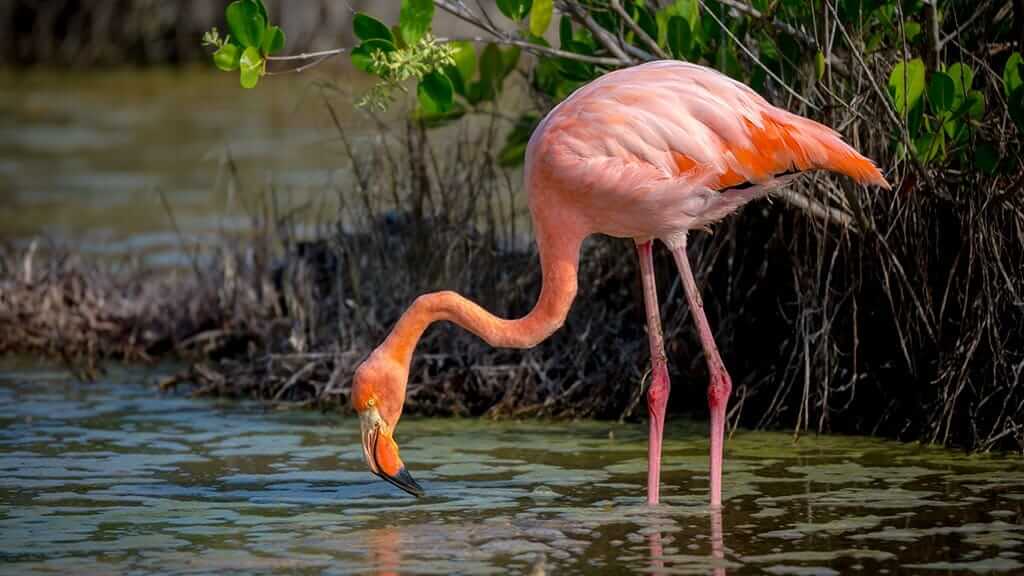
3. Isabela Island (at the time named Albermarle)
📌 September 28 -October 4, 1835
On Isabela Island Darwin encountered a large colony of marine iguanas.
“The rocks on the coast abounded with great black lizards four feet long; and on the hills, an ugly yellowish-brown species was equally common. We saw many of this latter kind, some clumsily running out of the way, and others shuffling into their burrows.” Oct. 2nd, 1835
A careful dissection of a marine iguana led to his discovery that they fed on a diet of underwater algae.
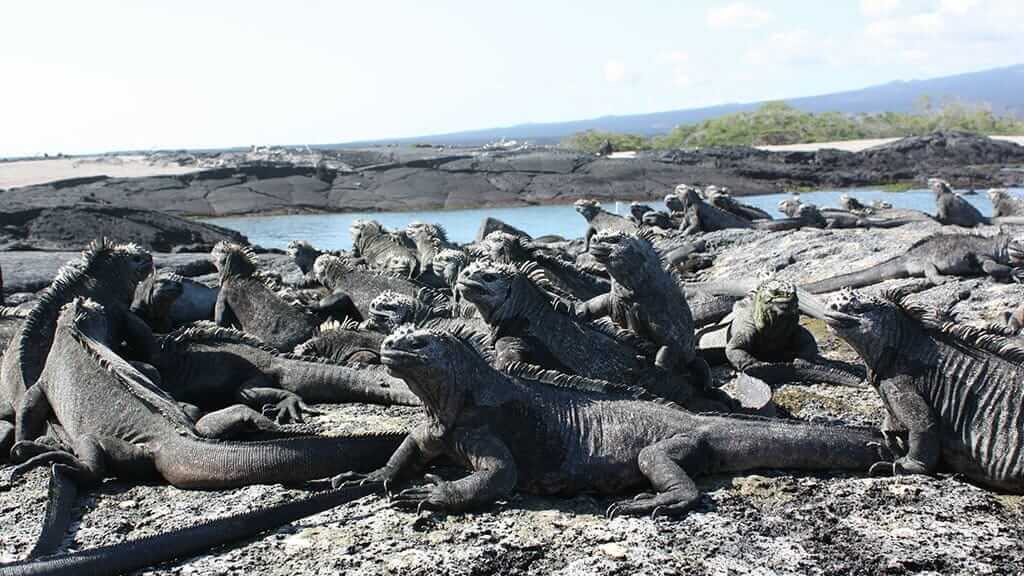
4. Santiago Island (at the time named James)
📌 October 8 - 17, 1835
Darwin rather enjoyed his time on Santiago Island, where he pitched a tent and carried provisions to spend a whole week on-site. He was in his element, collecting an array of species including Galapagos birds, fish, reptiles, insects, and plants.
“The lower region was covered by nearly leafless bushes, but the trees were here of a larger growth than elsewhere, several being more than two feet in diameter. The upper region being kept damp by the clouds supports a green and flourishing vegetation.” (Oct. 8th. 1835)
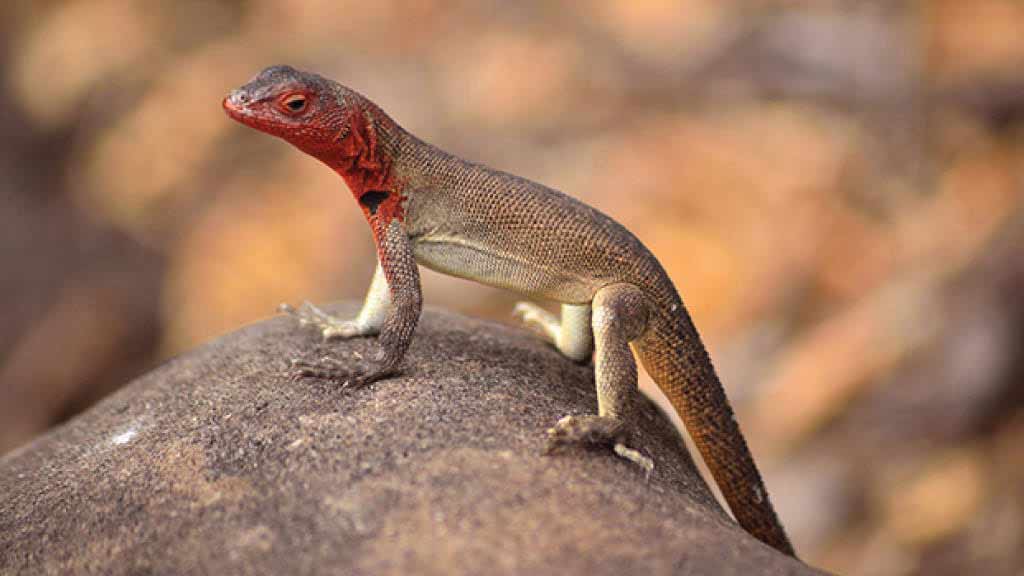
5. Other Islands that the HMS Beagle Visited
Charles Darwin also spent limited time ashore at Marchena, Genovesa, and Pinta Islands (then named Bindloe, Tower, and Abingdon respectively).
Finally, the HMS Beagle headed north-west to survey Wolf and Darwin Islands (Wenham and Culpepper), before a long voyage across the Pacific towards Tahiti.
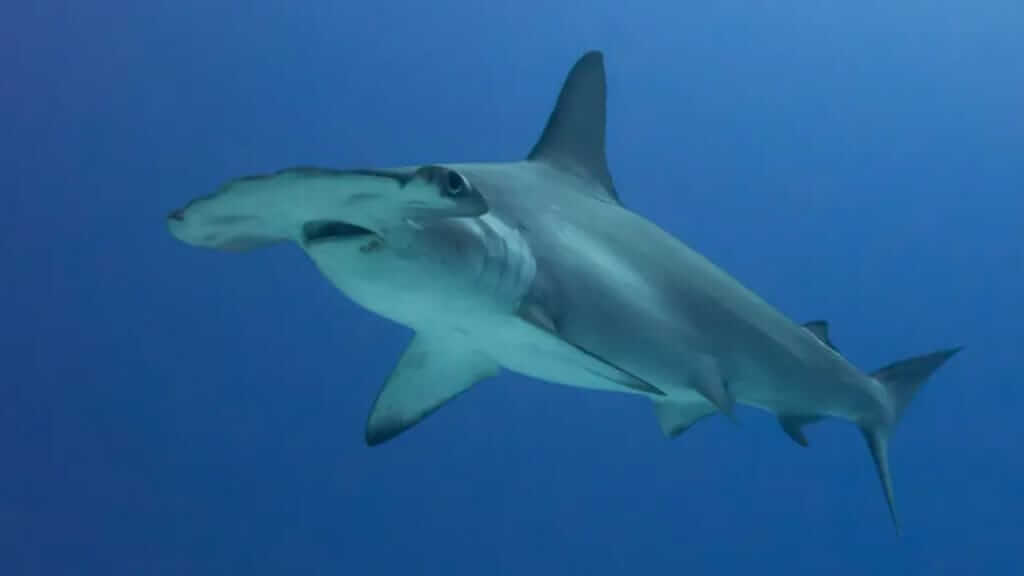
The Legacy of Charles Darwin at Galapagos
So, we’ve covered the history of Charles Darwin and Galapagos. What about his legacy today at the islands?
For starters, Darwin has both a Galapagos Island and a volcano named in his honor.
There’s also the Charles Darwin Research Station in Puerto Ayora on Santa Cruz Island. The facilities of the research station were inaugurated in 1964. It serves as a base for scientists to perform important research on the Galapagos Islands, and provide advice to the Galapagos Park Authority for the successful operation of the park. They also organize important conservation projects that help to protect and restore the flora, fauna, and habitats of the Galapagos.
I highly recommend a visit to the Charles Darwin Station during your Galapagos Vacation. It presents a wonderful opportunity to learn about the tortoise breeding project, as well as other conservation work of the Charles Darwin Foundation.
Rather fittingly, they also have several statues and pieces of artwork dedicated to Charles Darwin on display.
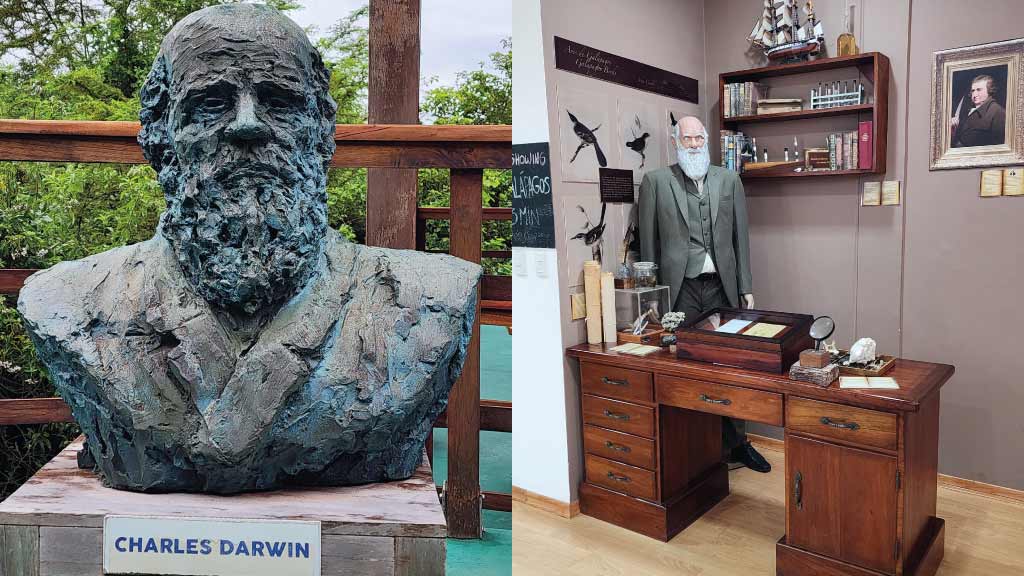
So, almost 2 centuries after Darwin’s visit, his name and legacy still play a big role in the protection and preservation of the islands for future generations to enjoy.
How to Follow in the Footsteps of Charles Darwin at Galapagos?
The best news for tourists is that it’s easy to follow in Darwin’s footsteps today. Not only can you land at some of the sites that Darwin visited, but you can also spot the same endemic species and their evolutionary quirks that so inspired Darwin.
In fact, the Galapagos Islands are arguably still the top spot on the planet to witness the effects of species evolution.
What is the best way to visit the Galapagos Islands?
Small vessel Galapagos Cruises are perfect for covering a lot of islands in a short space of time. Cruising is recommended to experience the full diversity of Galapagos birds, animals, and habitats.
A Galapagos Land tour, in contrast, offers more flexibility and freedom to define your own itinerary and explore more by yourself. Land tours are also more budget-friendly.
It’s also possible to visit remote Darwin and Wolf islands on a specialist, Live-aboard Galapagos Dive cruise. Here, experienced scuba divers can share the ocean with whale sharks, hammerhead sharks, manta rays, and much more.
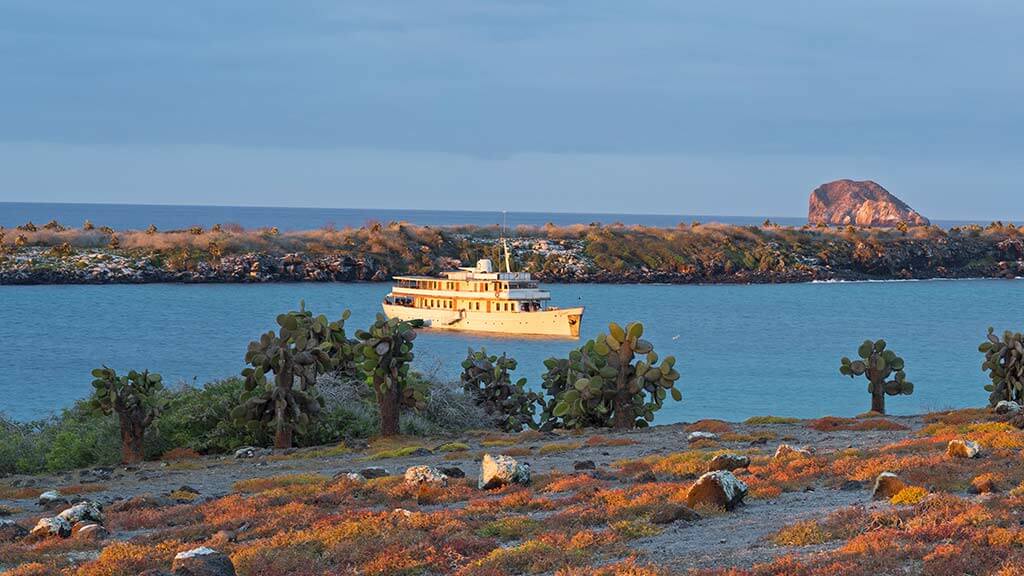
For help in booking your Ecuador or Galapagos Trip, contact us for a FREE QUOTE. Happy Gringo have close to 20 years of experience helping 10k+ tourists to successfully make their dream vacation happen.
As well as the Galapagos Islands, we specialize in custom-made itineraries including mainland Ecuador, the Amazon Rainforest, Cloud Forest, Peru, Colombia, and much more besides.
It’s also possible to visit remote Darwin and Wolf islands on a specialist, Live-aboard Galapagos Dive cruise. Here, experienced scuba divers can share the ocean with whale sharks, hammerhead sharks, manta rays, and much more.
Book with The #1 Trusted
Galapagos Travel Agency
Fun Charles Darwin Facts
- In his youth, Darwin dropped out of medical school at the University of Edinburgh. He cited being bored of the lectures and disliking the sight of blood.
- During his time on the islands, Charles Darwin tried to ride a giant tortoise and even ended up taking a juvenile pet tortoise home to England with him.
- Darwin was not overly fond of Marine Iguanas, referring to them in his notes as “imps of darkness”, and “disgusting, clumsy lizards”.
- Charles Darwin was not a happy sailor, suffering from acute seasickness. At most islands, he is reported to have been the first to disembark and the very last to get back on board.
- Back in England, Darwin spent 2 decades formulating his ideas and theories. His reluctance to publish is explained by his Christianity. In fact, even in 1859 he only published his work after hearing that fellow British naturalist Alfred Russel Wallace was developing a similar theory.
In conclusion, Charles Darwin and Galapagos will always be remembered together. It was Darwin’s visit to the islands that inspired his seminal work, and that led to the global recognition of this unique place.
Darwin’s discoveries changed the course of natural history and science forever. But you don’t need to be a history buff or botanist to get a kick out of the Galapagos Islands today. The evidence of his theory is all around to see. All you need is a little curiosity and imagination.
The Galapagos Islands remain the same “little world within itself” that Darwin witnessed 2 centuries ago. Why not come check it out for yourself?



